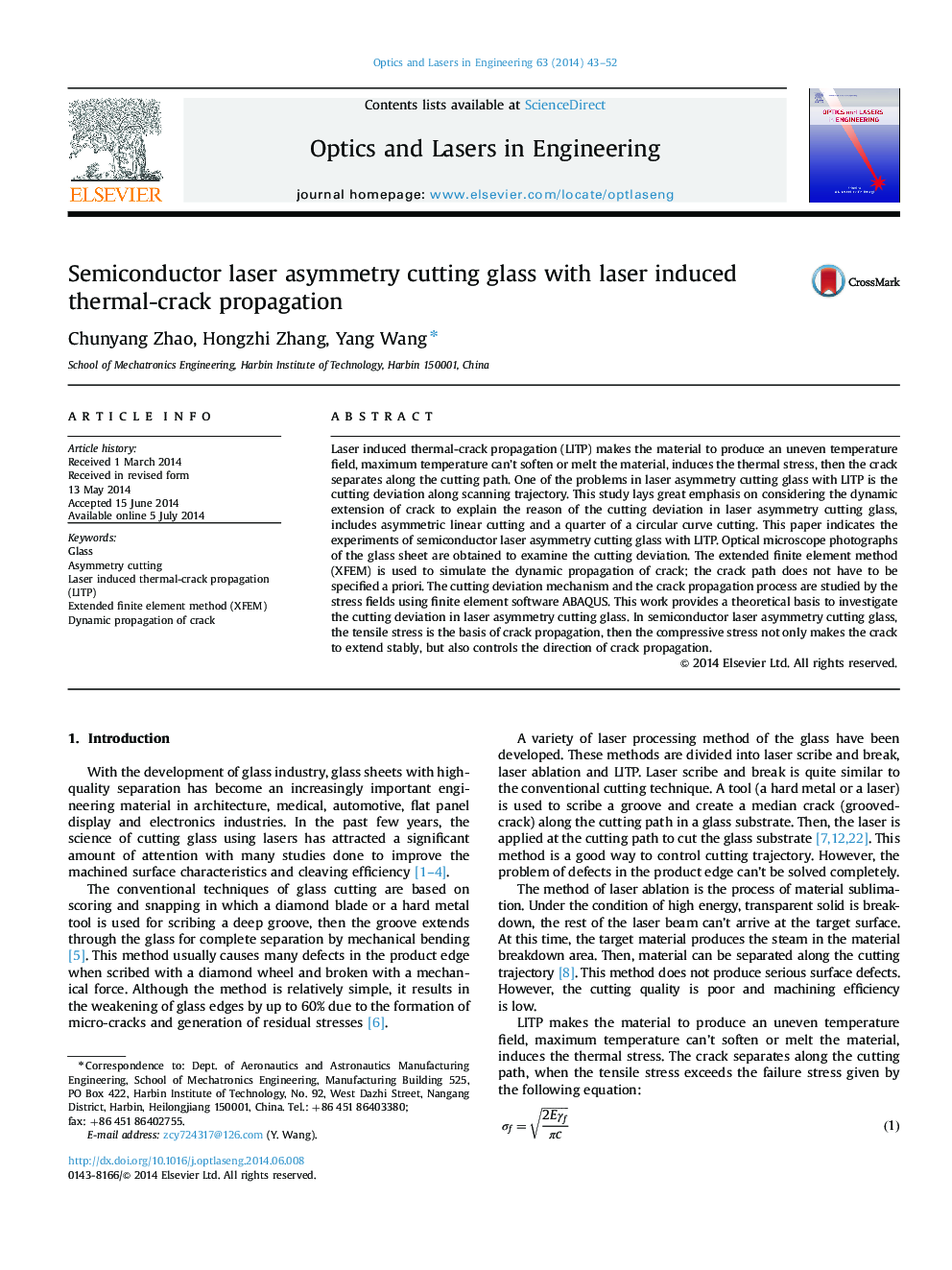| Article ID | Journal | Published Year | Pages | File Type |
|---|---|---|---|---|
| 734850 | Optics and Lasers in Engineering | 2014 | 10 Pages |
•The XFEM is used to simulate the dynamic propagation of crack in laser asymmetry cutting glass.•The dynamic extension of crack is considered to explain the reason of the cutting deviation in laser asymmetry cutting glass.•The cutting deviation mechanism and the crack propagation process were studied.•The cutting trajectory diverges to the side of the glass has a larger compressive stress.•Semiconductor laser asymmetry cutting glass with LITP has a smooth cutting surface.
Laser induced thermal-crack propagation (LITP) makes the material to produce an uneven temperature field, maximum temperature can’t soften or melt the material, induces the thermal stress, then the crack separates along the cutting path. One of the problems in laser asymmetry cutting glass with LITP is the cutting deviation along scanning trajectory. This study lays great emphasis on considering the dynamic extension of crack to explain the reason of the cutting deviation in laser asymmetry cutting glass, includes asymmetric linear cutting and a quarter of a circular curve cutting. This paper indicates the experiments of semiconductor laser asymmetry cutting glass with LITP. Optical microscope photographs of the glass sheet are obtained to examine the cutting deviation. The extended finite element method (XFEM) is used to simulate the dynamic propagation of crack; the crack path does not have to be specified a priori. The cutting deviation mechanism and the crack propagation process are studied by the stress fields using finite element software ABAQUS. This work provides a theoretical basis to investigate the cutting deviation in laser asymmetry cutting glass. In semiconductor laser asymmetry cutting glass, the tensile stress is the basis of crack propagation, then the compressive stress not only makes the crack to extend stably, but also controls the direction of crack propagation.
